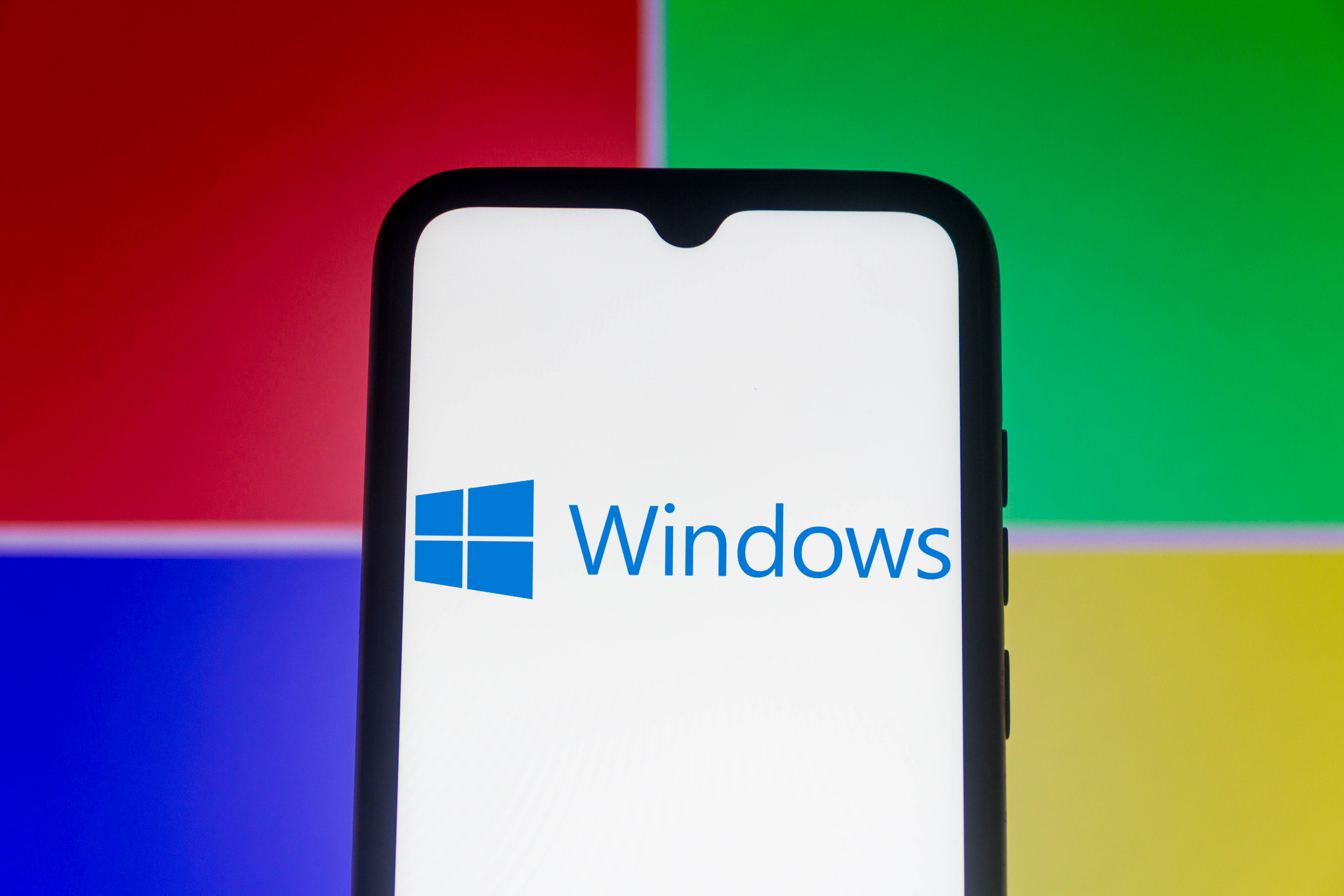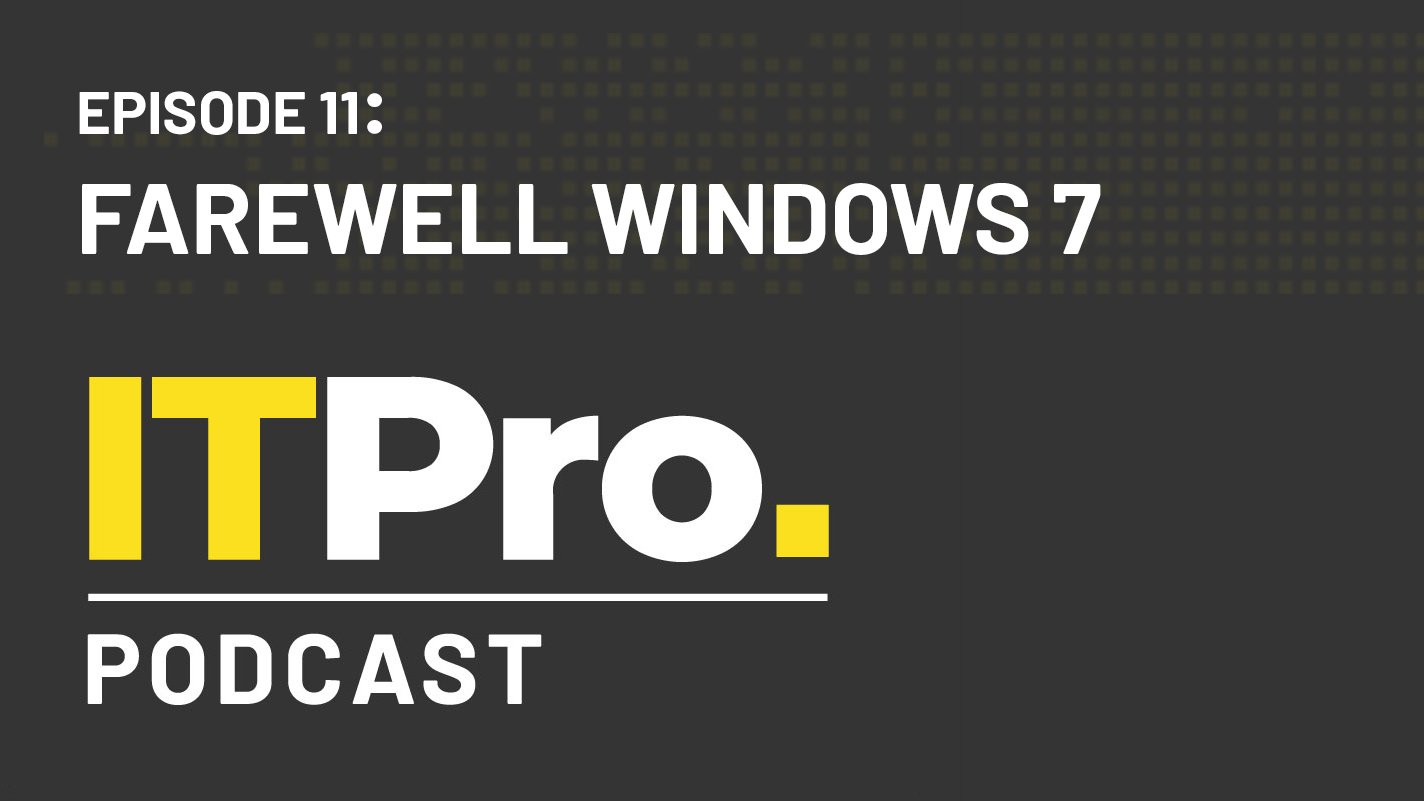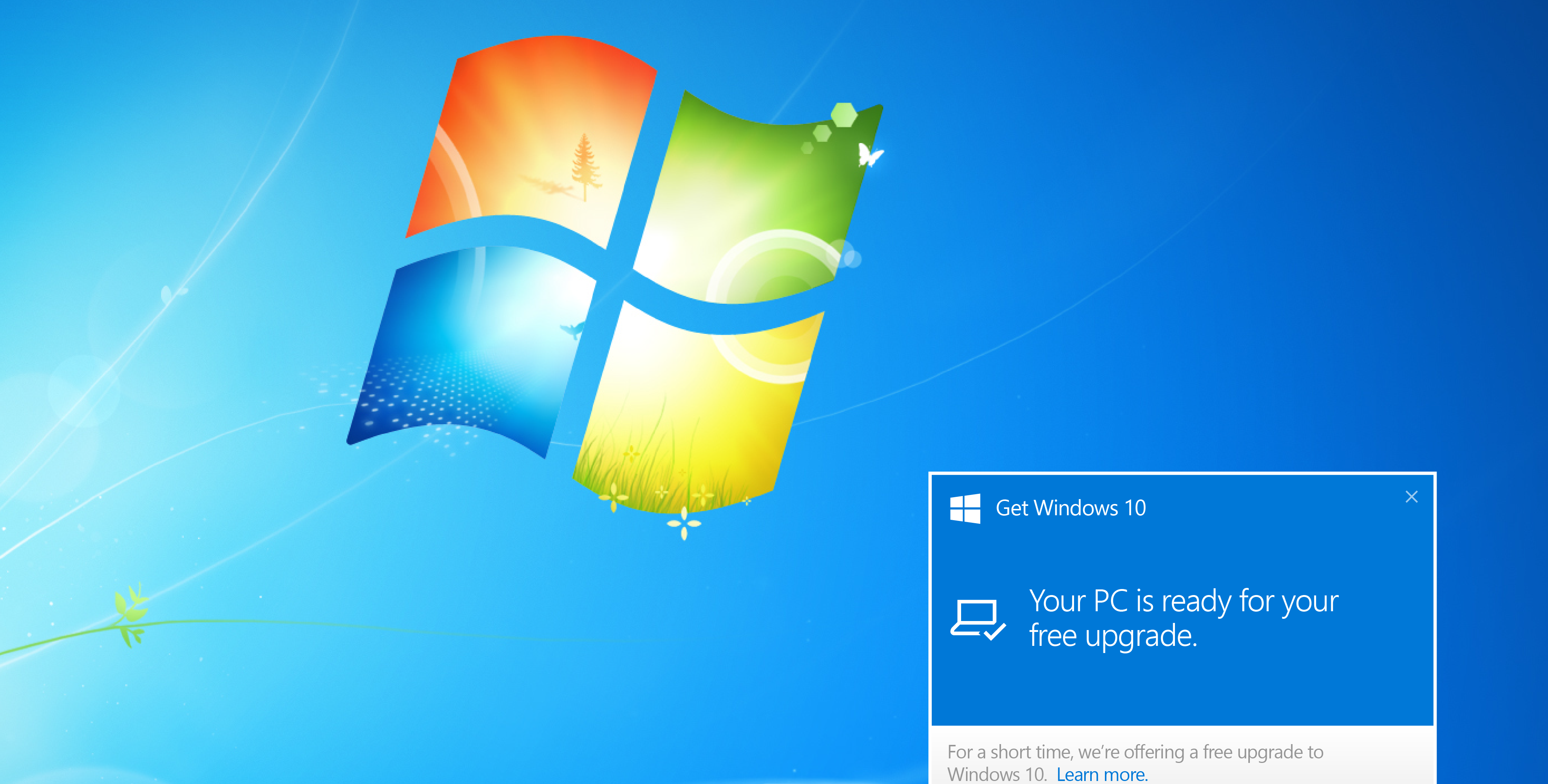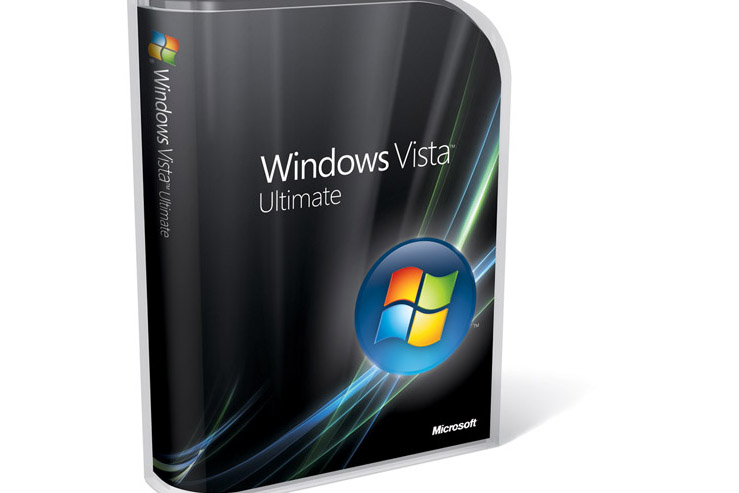The autopsy of Windows 7
Report of a postmortem examination

This article originally appeared in January's edition of IT Pro 20/20, available here. To sign up to receive each new issue in your inbox, click here.
| Name of Patient: | Windows 7 |
| Next of Kin: | Windows 8.1, 10 |
| Power of Attorney: | Microsoft |
| Date of Birth: | 22 July 2009 |
| Date of Death: | 14 January 2020 |
| Cause of Death: | Old Age / Obsolescence (built in) |
Patient was brought to the department shortly after expiry showing signs of Blue-Screen-of-Death, lack of foldable support and severe tiled interface deficiency.
Patient placed on extended life support in 2014, before life support systems were switched off by custodian, Microsoft. Patient was just short of its 11th birthday.
Pathologists Note: Until last year, Windows 7 was Microsoft’s most popular operating system and was still being used on 26.64% of machines globally at the end of 2019. Understood to hold as much as 60% market share at one time. One year after birth, clones of patient sold at the rate of one every seven seconds.
Autopsy of brain reveals similar structure to that of Windows Vista (d: 2017). Kernel structure identical, following noted evolution in genetics from grandfather, Windows XP (d. 2015)
Evidence to suggest that patient was artificially created by over 1,000 code donors. Names considered during gestation include “Blackcomb” and “Vienna”, before a more conventional name was given at birth.
Pathologists Note: It is understood that Microsoft’s previous effort in the field, named “Vista” (d. 2017) was greeted with disdain. When originally trying to conceive, the desire was for a successor to XP, but the offspring was found to be lacking in several areas compared to its progenitor. Similar mistakes were repeated later with Windows 8.0 (b. 2012)
Sign up today and you will receive a free copy of our Future Focus 2025 report - the leading guidance on AI, cybersecurity and other IT challenges as per 700+ senior executives
Visually, the patient shows the first instances of revolutionary “Aero” theme. This appears to have set a precedent in the genetic makeup of future generations. Resource demands of the central nervous system were much improved compared with previous versions.
Windows 7 shows signs of being touch-sensitive, another significant evolution. This type of genetic change, coupled with the significantly reduced resource footprint allowed hardware developers to create new types of host that would not have supported Windows systems in the past.
The ability for Windows 7 to adapt its consciousness to more host types led to development of same, including ultrabooks, foldables and mobile phones.
Patient had previously been limited to resistive touchscreens and the birth of more user friendly capacitive ones increased the cognitive development of touchscreen support.
Pathologists Note: Although attempts were made to transplant Windows 7 into mobile phones, the host rejected them, repeatedly.
Deeper examination of synapses suggests that Windows 7 is a thoroughbred Win32 operating system. There’s no sign of the ‘tiling’ effect that has blighted later evolutions, caused by infection with samples of Universal Windows Platform Syndrome.
Pathologists Note: Evidence to suggest that Windows 7 has blood group more compatible with relatives than previous instances. This may allow scope for cadaver to be donor for future iterations. This is a positive development after repeated cases of ‘driver incompatibility’, with many genetic traits, or ‘drivers’ not carried over.
After Windows conducted the controversial Mojave Experiment, it gave a much clearer idea of what users did and didn’t like. Taskbar displays signs of “pinning” capabilities.
Windows Media Center was introduced to the Windows 7 embryo, despite being on life support itself. However, Windows 7 appears to have developed a number of coping strategies including upgrading its Calculator and Paint motor functions.
While generally healthy, the ‘gadgets’ infestation, previously confined to Vista was found to be systemic in Windows 7. This evidence provides an early indication of future ‘widget’ manipulation in divergent ‘Android’.
Patient shows signs of snapping and shaking. This allows processes to be pinned to left or right hemispheres, or removal of all multitasking to focus on a single goal.
The immune system was more advanced than that of its predecessors and introduced new Recovery Environment and ‘shadow copies’ designed to give patient multiple chances of overriding death protocol. Although user Account Control showed signs of weakness compared to previous editions, a natural resistance to viruses and worm parasites is found without exposure to MMR (metamorphic malware and rootkits) thanks to the first recorded instance of ‘Windows Security Essentials’.
Patient has lost natural ability to display MSN Messenger and similar, due to pressure placed on the compliance part of the brain. Patient appears to use “Windows Live Essentials” self-help package to replace lost functions.
While the patient is indeed deceased, its clones are still responsive to stimuli. These instances must be quarantined, as immune system will decrease in function as time progresses, and should be laid to rest as soon as practical.
It is noted that due to a level of symbiosis with Microsoft, certain instances are capable of regaining full motor and immunity function if large quantities of currency are applied to Microsoft itself. It is thought this could extend life expectancy by up to three years for those who have evolved the deepest pockets.
Pathologists Decision:
Due to old age and relative lack of motor function, it is recommended that all clones of Windows 7 have life support systems removed in favour of successor, Windows 10. Organisations who have taken a “if it isn’t broken” approach to its welfare would be advised to either implement the upgrade or consider a transplant of money to Microsoft (see above).
Evidence suggests that Windows 7’s biology had a marked genetic impact not just on its own family, but on Android, Apple and Linux, and it should be noted that this specimen may well prove to be the ‘Adam’ of the modern computing age.
Corpse taken for disposal. Rest in peace.
Pathologist’s Note: The world wasn’t configured for one as beautiful as you.
Chris Merriman has been writing about technology since the 1990s for a variety of titles including Computer Shopper, MSN, TechRadar, Tom’s Guide and The Inquirer, where he broke a number of major tech news stories that were picked up globally. He has appeared on BBC, Sky News and Al Jazeera and was the resident tech expert at TalkRadio for a number of years. In between times, he has also been a consultant for several major tech firms.
Chris is fascinated by automation and the internet of things, as well as the evolution of the ways we communicate in the digital era. He's also a frequent contributor to ITPro's software guides, including Windows operating systems. Other specialisms include storage, peripherals, and web apps, and any gadget he’s allowed to take apart and fiddle with, preferably after throwing away the box, manual and receipt.
-
 Gender diversity improvements could be the key to tackling the UK's AI skills shortage
Gender diversity improvements could be the key to tackling the UK's AI skills shortageNews Encouraging more women to pursue tech careers could plug huge gaps in the AI workforce
-
 Researchers claim Salt Typhoon masterminds learned their trade at Cisco Network Academy
Researchers claim Salt Typhoon masterminds learned their trade at Cisco Network AcademyNews The Salt Typhoon hacker group has targeted telecoms operators and US National Guard networks in recent years
-
 Microsoft angers admins as April Patch Tuesday delivers password feature without migration guidance
Microsoft angers admins as April Patch Tuesday delivers password feature without migration guidanceNews Security fixes include a zero day exploited by a ransomware group and seven critical flaws
-
 Managing a late migration
Managing a late migrationOpinion When it comes to moving from Windows 7 to Windows 10, it's better late than never
-
 How to set up a Windows 7 emulator for Windows 10
How to set up a Windows 7 emulator for Windows 10Tutorials A complete guide for setting up a Windows 7 emulator for Windows 10 so you don’t lose access to your apps
-
 The IT Pro Podcast: Farewell Windows 7
The IT Pro Podcast: Farewell Windows 7IT Pro Podcast We reflect on the legacy of one of Microsoft's most enduringly popular operating systems
-
 Windows 7 ends: what do you do next?
Windows 7 ends: what do you do next?In-depth From SMBs to big business and individuals, after 10 years it's time to move on from Windows 7
-
 Windows 7 end of life: What to do if you haven't upgraded yet
Windows 7 end of life: What to do if you haven't upgraded yetIn-depth Microsoft has now officially moved Windows 7 to end of life, meaning it's no longer a viable business platform
-
 Windows 10 vs Windows 8.1 vs Windows 7 - Microsoft OS head-to-head
Windows 10 vs Windows 8.1 vs Windows 7 - Microsoft OS head-to-headVs We pit Microsoft's most popular operating systems against each other to see which is the greatest of all time
-
 Vista: Finally, the end is nigh
Vista: Finally, the end is nighNews Operating system will get no further updates as Microsoft withdraws support